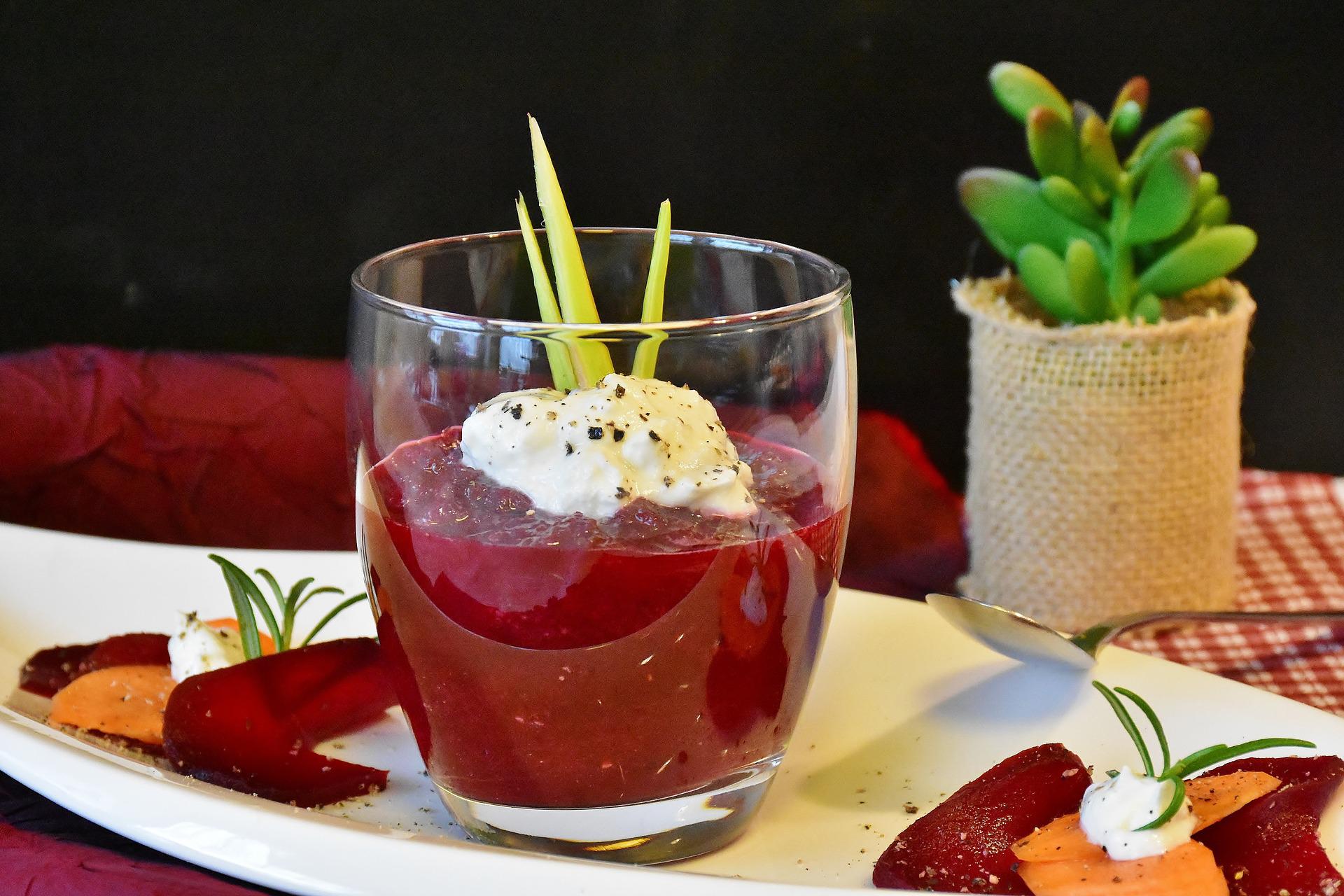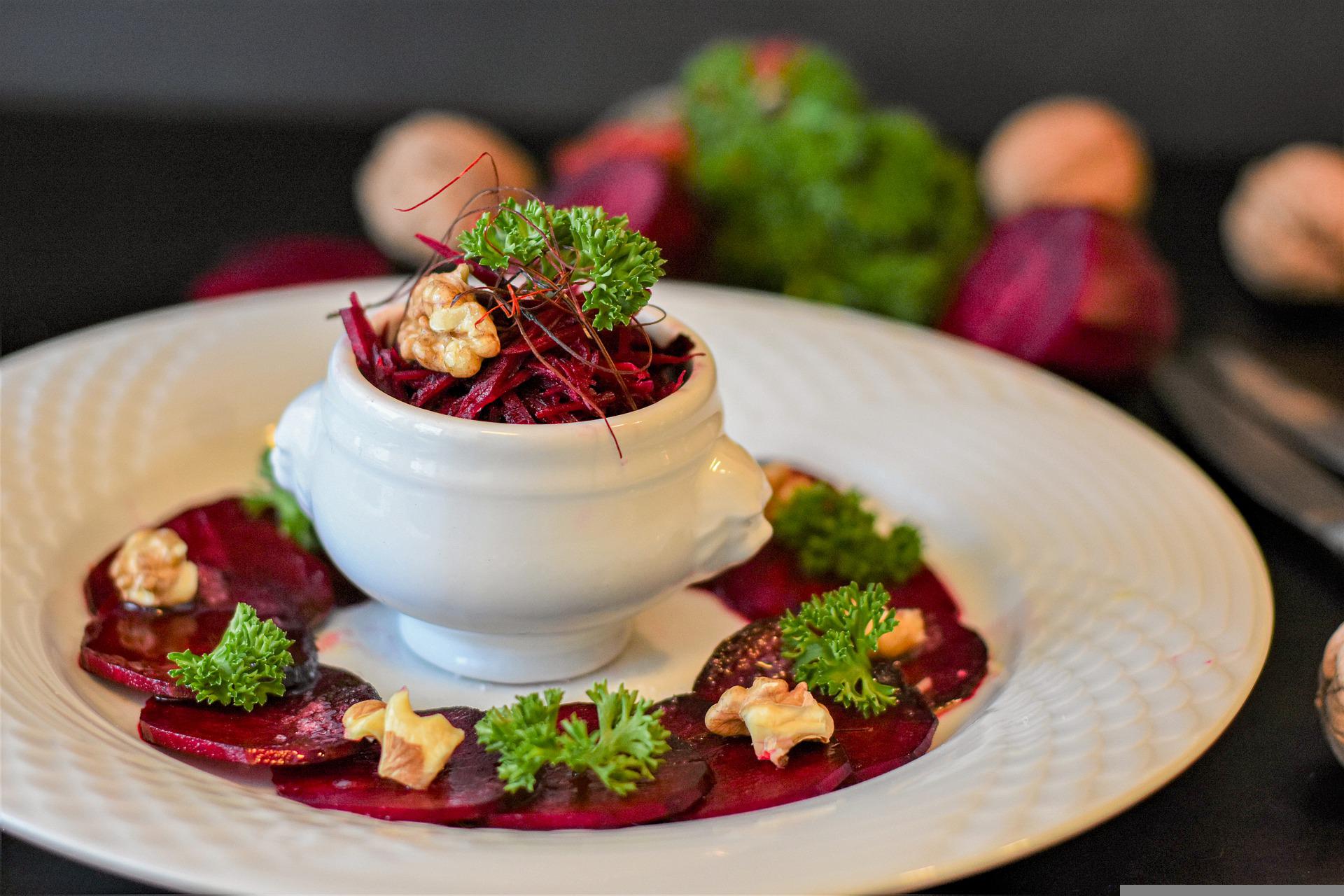Anyone new to the cooking procedure should start with a basic beetroot recipe. It’s not the ideal recipe for novices, but if you don’t like beets, it’s an excellent place to start. A few simple tips will help you prepare these healthy vegetables and make them tasty for your dinner. What’s more, the best part? It’s delectable! A nutritious, nutrient-dense beet dish can be tailored to your preferences. Beetroot-based dishes, such as beetroot-coconut soup, are a tasty and healthful way to offer this root vegetable. The earthy sweetness of beets is enhanced with aromatic spices like cinnamon and cloves.
When purchasing beets, keep in mind that the skin should be intact. Make sure you buy fresh beets free of bruises and other visible flaws. Also, look for firm, clean, and dry beets, as they are less likely to bleed. Remove the greens from the beets before cooking them once you’ve decided on the type. It is possible to cook beets without peeling them, but it will take longer and require more effort.
What is Beetroot?
Beetroot (Beta vulgaris) is a root vegetable known as red beet, table beet, garden beet, or just beet. Fiber, folate (vitamin B9), manganese, potassium, iron, and vitamin C are abundant in beetroots. Beets and beet juice have been linked to several health benefits, including increased blood flow, lower blood pressure, and better athletic performance. Several of these benefits are due to the significant level of inorganic nitrates. Beets are delicious raw, but they’re usually cooked or pickled. Beet greens, as well as beet leaves, can be eaten.
Beetroot is available in various colors, including yellow, white, pink, and dark purple. Beetroot contains approximately 8–10% carbs, whether raw or cooked. In raw and cooked beetroots, simple sugars like glucose and fructose account for 70% and 80% of the carbs, respectively. FODMAPs, or fructans, are short-chain carbohydrates found in beets. FODMAPs are challenging to digest for some people, resulting in unpleasant digestive symptoms. Beetroots have a glycemic index of 61, which is considered average. The glycemic index (GI) measures how quickly blood sugar levels rise after eating.
How to Make the Best Beetroot Recipe?
Many people grew up eating limp slices of beetroot in a vinegar bath until beetroot became a vegetable basket superfood. Roasted beetroot is a popular technique to prepare these red beauties today, and it’s a better option than pickled or boiled beets.
Ingredients
- Eight beetroots (tennis-ball sized)
- Three tablespoons of olive oil
- One teaspoon of sea salt flakes
- Two sprigs of fresh thyme
Steps
Here are the steps to follow:
- Gather the ingredients
- Heat the oven to 400 F (200 C/Gas Mark 6).
- Wash the beets thoroughly under cold running water and blot dry with paper towels. Remove the leaves, leaving at least 1 inch (2.5 centimeters) of the stem behind, preferably a little more. Do not take the roots off, and take care not to damage the skin while working. They will still taste good, but some flavors will be lost.
- Drizzle the olive oil over the beets in a big, roomy roasting pan. Roll them in to make sure the beetroots are entirely covered with oil. Season with thyme and sea salt.
- Bake for 40 to 45 minutes, or until the beets are tender but not skinny, in a preheated oven. Remove the pan from the oven and set it aside to cool the beets.
- Remove the skin with a paper towel once it has cooled; it should easily peel away. Wear rubber gloves to keep your hands from turning red while doing this. Remove the root as well as the stalks.
- Beets can be chopped or left whole. Drizzle with olive oil and season with additional salt and thyme if desired. Serve and have fun.
Tips
- Beet juice stains skin and porous surfaces quickly. When working with beets, wear an apron to protect your clothes. Use your favorite chopping board (a bleach solution can clean wood and plastic). If you don’t want to use gloves, apply damp salt and lemon juice to your hands before washing them with soap and water.
- This recipe calls for pure or light olive oil. The high heat required for roasting will raise the smoke point of extra-virgin olive oil, changing the flavor and filling your home with smoke.
What do Beets Taste Like?
While some people find it difficult to swallow a beet, the flavor of beets is determined by how they are prepared. Because of its health benefits, most chefs use it as a salad garnish and with natural coloring. In some nations, beets are used entirely in various cuisines, both cooked and raw. Beets, unlike other root crops, can be consumed uncooked. But the taste of the beets is a big concern here. You’ll have to sort out something because some individuals have strong feelings about it. Beets are frequently sweet when eaten raw. Beet extracts, beetroot drinks, and beet salads are all over. This crop can be included in the food pyramid because it is nutritious.
Why do Beets have an Earthy Taste and Smell?
People remark about how it tastes “dirty.” It’s a common reaction from folks when this subject is brought up. This is one of the reasons why some individuals are afraid of beets, while others enjoy the earthy flavor. Beets are a type of root crop that grows in the ground. As a result, the theory that it tastes like dirt is based. It is a fallacy that dirt and earthy particles remain in beets after rinsing.
According to Irwin Goldman’s article, the earthy flavor of beets comes from an organic substance produced by soil bacteria, known as “geosmin.” This substance also has the earthy aroma of a recently plowed field. It was also stated that the taste and smell you object to are natural. Geosmin is highly sensitive to humans, allowing them to react to it or enjoy its earthy qualities quickly. Geosmin levels are also high in spinach, lettuce, and mushrooms, but don’t be alarmed; geosmin is entirely harmless.
What Goes Well with Beets?
What foods complement beets? Warm spices include allspice, cumin, cinnamon, pepper, paprika, caraway seeds, and fresh or dried herbs like thyme, tarragon, dill, parsley, mint, basil, or coriander (or blended spices like a curry).
Beets pair well with carrots, onions, radishes, arugula, cabbage, celery, scallions, cucumber, fennel, endive, spinach, and avocado.
Add tartness with kefir, yogurt, sour cream, crème Fraiche, or a squeeze of lemon or lime juice to complement the mild flavor of beets. Hard-boiled eggs are also delicious with roasted beets, and beets go well with practically any meat, including pig, beef, duck, and fish.
Is it OK to Eat Beetroot Every Day?
They can help your brain, heart, and digestive system stay healthy, increase athletic performance, reduce inflammation, and delay cancer cell growth. Beets are also delicious and simple to incorporate into your diet.
Like any other food, Beets can cause health concerns if consumed in excess.
Overconsumption carries the following risks: Increased risk of kidney stones: Beets are high in the chemical oxalate, leading to kidney stone formation if consumed in excess. Beeturia causes the urine to turn pink or red. Skin rash, hives, itching, chills, and fever are frequent adverse reactions to beetroot. Beet juice causes the vocal cords to shrink in some people, making swallowing difficult. If you are allergic to beets, you should avoid eating them.
Beets are dosed based on their nitrate concentration in general. Between 6.4 and 12.8 milligrams per kilogram of beets is the optimum level. To put it another way, one cup (136 grams) of beets is plenty for one day.
Conclusion
A nutritious, nutrient-dense beet dish can be tailored to your preferences. Beetroot-based dishes, such as beetroot-coconut soup, are a tasty and healthful way to offer this root vegetable. After roasting, beetroot can be preserved for a few weeks. Beets that have been roasted can also be frozen. You can eat them cold or at room temperature if you cut them into cubes or slices. These beets can also be served as a side dish with meats and chicken. You can also make beetroot salads to bring to a picnic or potluck.
Wrapping beets in foil or another baking dish and drizzling olive oil on top is a delicious method to roast them. This will aid the beets in retaining the taste stored on their surfaces, and it also keeps the juice from leaking out. After the beets have cooled, peel them and cut them into 1/4 to 1/2-inch thick wedges or slices. Please place them in the oven after brushing them with olive oil and seasoning them with salt and pepper.


